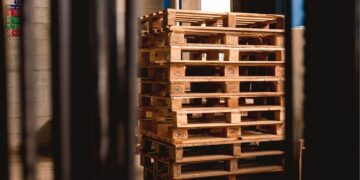We’ve reached a critical point in human history. Unless drastic changes take place, our planet could soon become uninhabitable. While it might seem like an inevitable decline, there are signs of hope. If individual people show they can make a difference, maybe it can inspire others and create widespread change.
Deforestation is a big problem.

Whether it’s because of slash-and-burn development or simply chopping trees down for their wood, deforestation is problematic. It eliminates natural habitats for various life forms and contributes to climate change.
Let’s meet Sebastião Ribeiro Salgado.

This Brazilian photojournalist and economist is a man who wears many hats. A few years back, he gave a Ted Talk on his late bloomer status as a photographer — he only picked it up in his 30s.
In 1994, Salgado went to Rwanda.

The aftermath of the Rwandan genocide left a scar on the African country. Salgado saw death, destruction, and decay on his trip to photograph the genocide. Not surprisingly, the experience left him profoundly traumatized.
He returned home.

Salgado loves nature. In his TED talk, he described his childhood growing up on a farm, and the widespread flora and fauna he encountered. He hoped to reconnect with this on his return from Rwanda.
He lives in Minas Gerais, Brazil.

An area of great natural beauty (check out this scene in Serra da Canastra), this state in southeastern Brazil has been hit hard by deforestation. Salgado expected lush greenery, but he got something else entirely.
The region was arid and barren.

Trees that took centuries to grow composed a thick jungle in Minas Gerais. But just a few years of human intervention had turned the landscape into a barren, empty wasteland.
Salgado and his wife took a big step.

Minas Gerais was in rough shape, but it was still home. So Salgado and his wife, Lélia, decided to put down some roots. They bought this abandoned cattle ranch from Salgado’s parents. This is what it looked like in 2001.
They needed help.

Salgado and his wife wanted to make their property beautiful again. It was a big project, so in 1998 they founded Instituto Terra , a team of dedicated volunteers, to help them out.
A lot of trees needed to be planted.

The dry ground was nearly devoid of trees when they moved in. Salgado planted the first tree in December of 1999, and spent the next few years working the land.
They had lots of help.

Deforestation is widespread in Brazil, and many Brazilians want to help curb the blight. Instituto Terra received donations of saplings, shrubs and miscellaneous trees to help them make the land green again.
Here’s how it looks now.

In 2001, the same angle showed a barren, brown wasteland. That was 18 years ago, which is a fairly long time. Still, considering how slowly trees grow, it’s incredible how quickly the land has been transformed.
It’s stunning.

It didn’t come easy. More than two million (!) saplings have been planted over the past two decades, comprising 293 unique species of tree. The area has been declared a Private Natural Heritage Reserve.
The positives are wide-ranging.

The lush greenery certainly makes things look nicer, but it also prevents soil erosion by providing a solid root structure. It’s also reinvigorated natural streams and springs that had dried up.
Wildlife has returned.

The Brazilian rainforest is home to all kinds of endangered species. Usually, they’re being chased out of their habitat. In this case, hundreds of them have returned to Salgado’s land.
It’s an incredible story.

Millions of trees, 172 species of birds, 33 species of mammals, and 15 species of amphibians and reptiles now populate an area that looked dead and dry scarcely two decades ago.
h/t: Science Insanity

















































